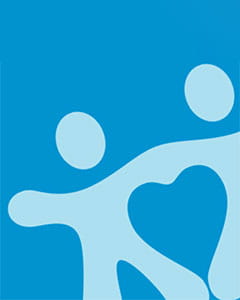In the last decade, we’ve seen increased understanding about children with autism and the many physical and mental health conditions that frequently accompany an autism diagnosis.
While each new piece of research adds to our knowledge of autism, it also adds to the complexity of developing the best practices to address the diverse needs of the autism community.
As we highlight Autism Awareness Month this April, we want to bring increased understanding to the Top 8 Myths still surrounding an autism diagnosis.
MYTH #1: Autism isn’t that common.
FACT: Prevalence of autism is 1 in 68 children. That means almost everyone will either have a family member, loved one or know someone who has a family member with this condition.
MYTH #2: Autism is only found in boys.
FACT: Girls are also affected by autism. Because the symptoms are sometimes subtler, many girls do not get diagnosed until adulthood.
MYTH #3: People with autism do not have emotions or don’t want social interaction.
FACT: On the contrary, many people with autism seek out social interaction. They also have emotions that they feel very deeply.
MYTH #4: Autism is the same in everyone.
FACT: Although there are certain criteria that are used to diagnose a child, every person is unique, and some people may act differently than others. Autism is a spectrum disorder so there is a wide range in abilities. In the autism community there is a saying, “If you’ve met one person with autism, you’ve met one person with autism.”
MYTH #5: Autism is a mental health disorder.
FACT: Autism is a neurological condition, and there have been many research studies done on the how the brain processes information differently for people who have autism.
MYTH #6: Autism can be cured.
FACT: In years past, there was a theory that a cure could be found. Many people and organizations are now shifting away from that idea and instead are embracing acceptance and the idea of neurodiversity. Many people who have autism feel that they don’t need a cure as they can contribute to society and be productive and lead meaningful lives. Society as a whole must accept the unique strengths this community has to offer.
MYTH #7: Autism is caused by bad parenting.
FACT: Back in the 1950s there were some theories that suggested that mothers who didn’t bond with their babies could cause autism; this has long been disproved.
MYTH #8: Autism can be outgrown.
FACT: Autism cannot be outgrown. However, early detection and early intervention have proven to have a positive impact in the child’s development and future outcomes.
Causes and Risk Factors
According to the Centers for Disease Control and Prevention (CDC), not all causes of autism are known. However, there may be many different factors that make a child more likely to have autism, including environmental, biologic and genetic factors.
-
Most scientists agree that genes are one of the risk factors that can make a person more likely to develop autism.
-
Children who have a sibling with autism are at a higher risk of also having autism.
-
Autism tends to occur more often in people who have certain genetic or chromosomal conditions, such as fragile X syndrome or tuberous sclerosis.
-
When taken during pregnancy, the prescription drugs valproic acid and thalidomide have been linked with a higher risk of autism.
-
There is some evidence that the critical period for developing autism occurs before, during, and immediately after birth.
-
Children born to older parents are at greater risk for having autism.
Warning Signs in Toddlers
The following "red flags" may indicate your child is at risk for an autism spectrum disorder. If your child exhibits any of the following, please don’t delay in asking your pediatrician or family doctor for an evaluation:
-
Lack of imitation. Not imitating facial gestures or sounds.
-
Lack of communication. This also includes gestures, such as pointing to indicate interest using eye gaze, facial expressions and sounds at the same time.
-
Lack of social reciprocity. No sharing of warm joyful expressions, only seeking out others to meet needs.
-
Repetitive behaviors like flapping hands, staring at lights, looking out of the corner of their eyes, pacing back and forth, spinning and making repetitive sounds.
-
Over/under reaction to sensory input, such as sounds, lights, smells, textures and tastes.
-
No back-and-forth sharing of sounds, smiles or other facial expressions by nine months of age.
-
No babbling by 12 months.
-
No words by 16 months.
-
No meaningful, two-word phrases (not including imitating or repeating) by 24 months.
Training and Resources
For those who want to learn more about autism, the resources below are great places to start your journey.
-
Center for Autism and Related Disabilities – Provides resources, support and technical assistance to families and professionals. Serves individuals of all ages.
-
Autism Speaks– Provides resources, research and information for families and individuals of all ages.










